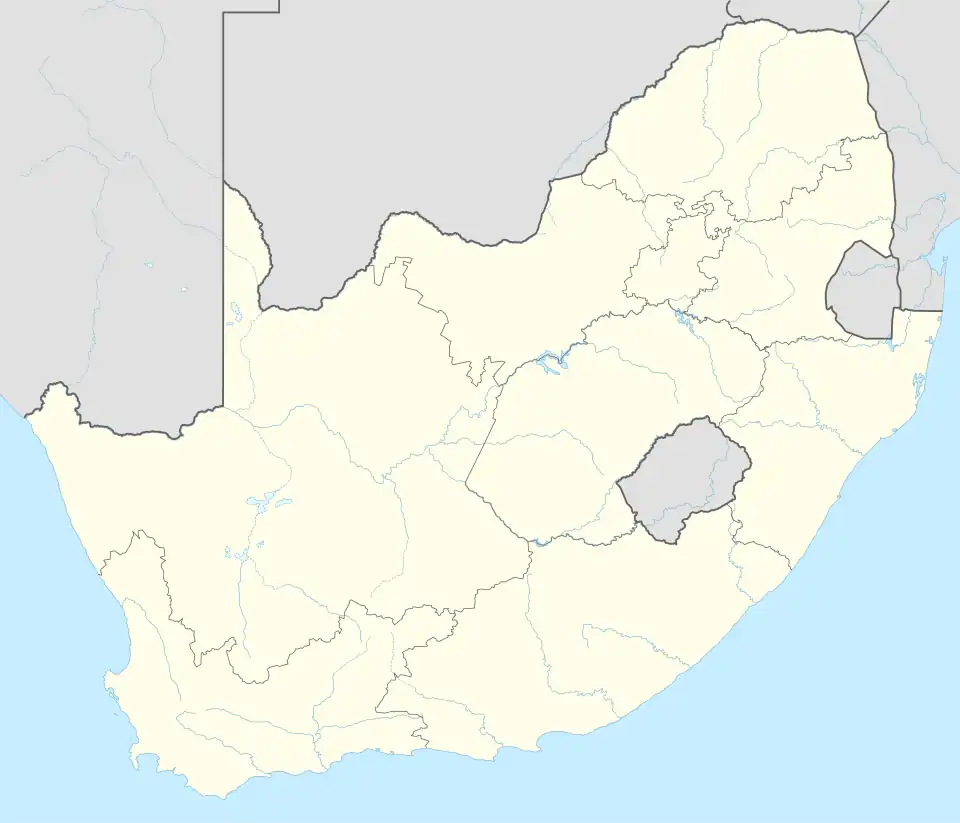Muden, KwaZulu-Natal
Muden | |
|---|---|
A peach orchard in Muden | |
 Muden  Muden | |
| Coordinates: 28°57′58″S 30°22′59″E / 28.966°S 30.383°E | |
| Country | South Africa |
| Province | KwaZulu-Natal |
| District | uMzinyathi |
| Municipality | uMvoti |
| Area | |
• Total | 52.00 km2 (20.08 sq mi) |
| Population (2011)[1] | |
• Total | 5,308 |
| • Density | 100/km2 (260/sq mi) |
| Racial makeup (2011) | |
| • Black African | 98.6% |
| • Coloured | 0.4% |
| • Indian/Asian | 0.1% |
| • White | 0.9% |
| First languages (2011) | |
| • Zulu | 96.2% |
| • English | 1.3% |
| • Other | 2.5% |
| Time zone | UTC+2 (SAST) |
| PO box | 3251 |
| Area code | 033 |
Muden is a hamlet on the Mooi River, 24 km northwest of Greytown and 38 km south-east of Weenen. It was established by the missionary Reverend Heinrich Röttcher and named after Müden,[2] a municipality in Hanover, Germany, where he was originally from.[3]
Agriculture
An irrigation scheme in the area waters large citrus orchards. Muden also is the furthest east location where San rock art can be found.
Sources
- Erasmus, B.P.J. (1995). Op Pad in Suid-Afrika. Jonathan Ball Uitgewers. ISBN 1-86842-026-4.
- Rosenthal, Eric (1967). Ensiklopedie van Suidelike Afrika.
References
- ^ a b c d "Main Place Muden". Census 2011.
- ^ Either Müden (Aller) or Müden (Örtze), which are near to each other and which both seem to have been within the Kingdom of Hanover when Röttcher was born.
- ^ Raper, Peter E. (1987). Dictionary of Southern African Place Names. Internet Archive. p. 322. Retrieved 28 August 2013.
.svg.png)